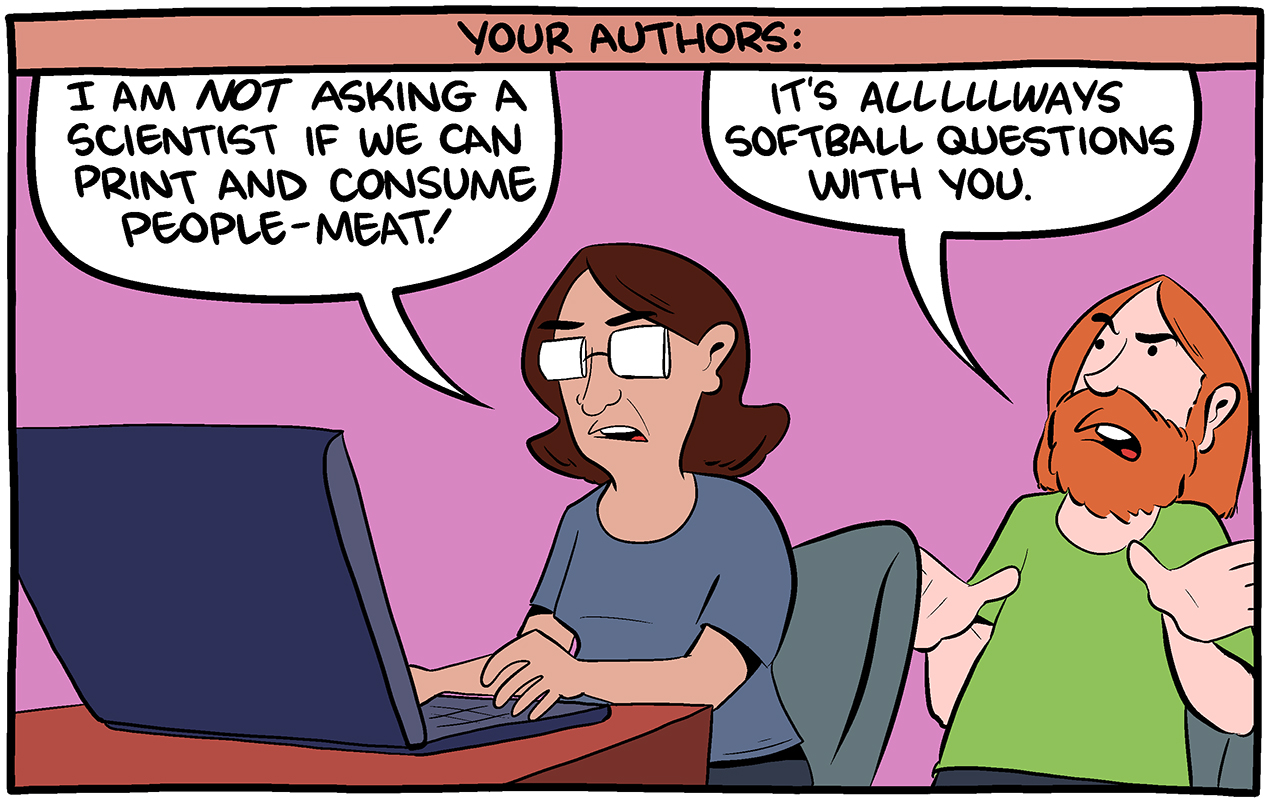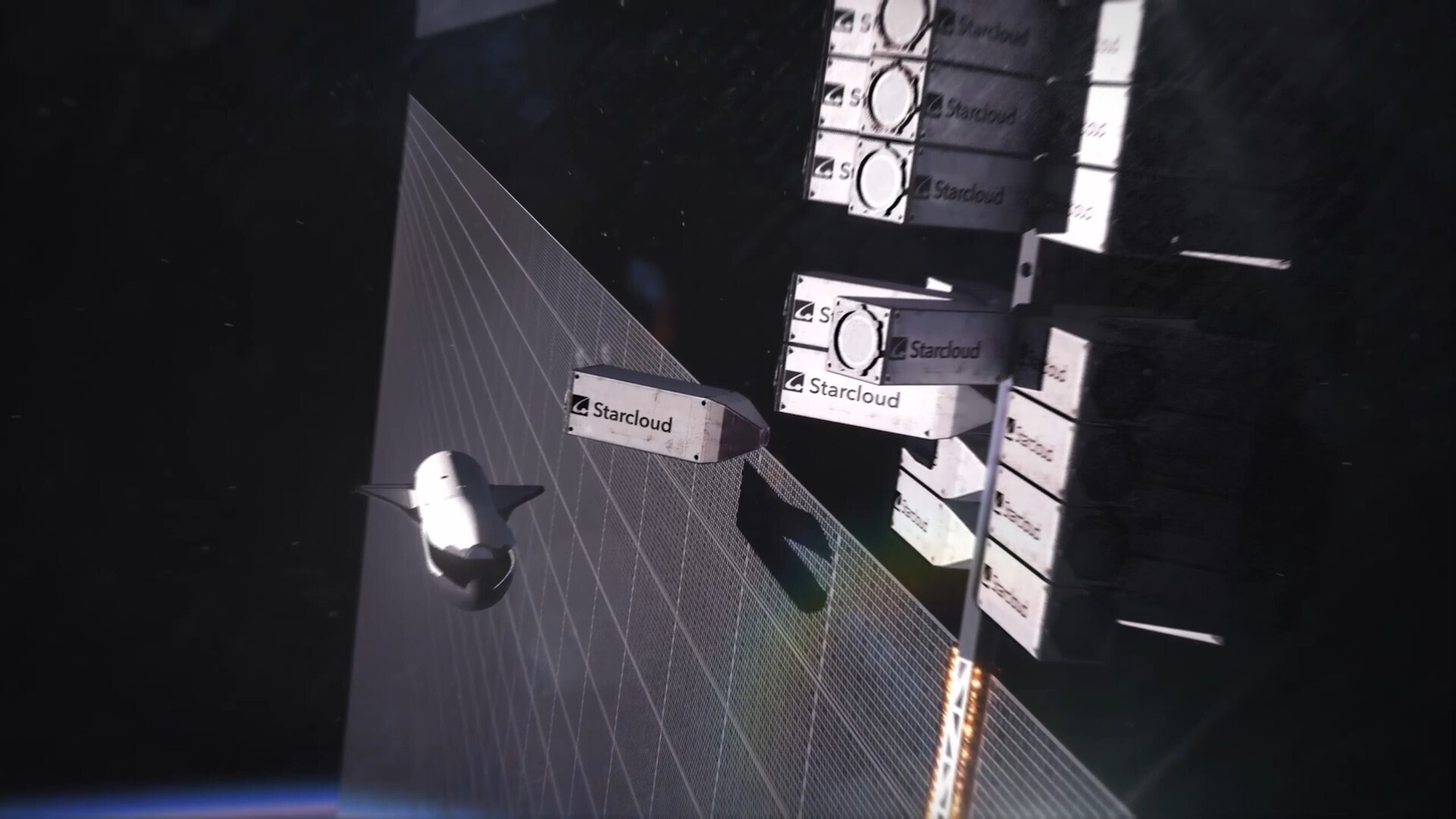'Soonish' Predicts World-Changing Tech: Author Q&A

Visions for futuristic technology can be immensely practical (self-driving cars) or outlandish (personal jetpacks), but they typically are accompanied by certain inevitable questions: How will scientists and engineers get us there — and how much longer will we have to wait?
Science writers Kelly and Zach Weinersmith tackle these questions and more in their new book "Soonish: Ten Emerging Technologies That'll Improve and/or Ruin Everything" (Penguin Press, 2017), released in the U.S. yesterday (Oct. 17). They combine humorous illustrations — Zach is the creator, writer and artist of the popular science webcomic "Saturday Morning Breakfast Cereal"— with serious (for the most part) investigative reporting, to explain sophisticated research, discoveries and inventions that are already pushing the boundaries of human achievement, while peering ahead to see where it all will take us next.
Recently, the authors spoke with Live Science about some of the promising tech they entertainingly outline in their book — which includes cheap spaceflight, personalized disease treatment, shapeshifting robots, 3D-printed food and brain-computer interfaces — and described where science is likely to take us from there, and what might be some of the hurdles that could spring up along the way.
This Q&A has been edited lightly for length and clarity.
Live Science: How did you decide on the final list of technologies that ended up in the book?
Kelly Weinersmith: We originally — naively — started off with about 50 technologies. And as we started, it became clear that was going to be an overwhelming amount of research, and each individual piece would have to be so short that it would be better for someone to read the Wikipedia article, we really wouldn't be adding anything exciting.
So, we teased it down to 25, and after doing a couple of practice chapters, we ended up cutting it down to 10 topics, because we wanted to be able to go into depth. We're super nerdy, and one of the things that was really exciting to us was the opportunity to take a deep dive into these different technologies — that's how we ended up deciding that 10 was the right number.
Breaking space news, the latest updates on rocket launches, skywatching events and more!
Live Science: Did you have any favorite technologies when you started working on the book? And by the time it was done, did you have new favorites?
Zach Weinersmith: I fell in love with all of them. I'm so excited about fusion, I find the tech itself just sort of objectively interesting. But we learned that it's a bit of a glum field, more so than some of these other technologies, I think, because it's been 60 years of not having the successes that some people expected.
ITER [the International Thermonuclear Experimental Reactor, currently under construction in France] is going to cost $20 billion, and not everyone's sure it's going to work as well as they want it to. There was one scientist we talked to who said, "Even if we got it to work, it's not clear that it would be a good idea, because it's so expensive to set it up in the first place." If he does this thing and it's awesome but it takes 400 years to recoup its expense, it's kind of a bummer.
K. Weinersmith: I don't think that there were any technologies that I ended up liking less by the end. There were some that I ended up liking more, and then some that I ended up feeling more conflicted about.
Asteroid mining — I ended up being much more excited about. Because our initial impression of this field was that, you go up to the asteroid, you find platinum, you bring platinum back, and now you have a lot more metals and you can build a lot more on Earth, and that's really cool. But it turns out that's not what asteroid mining's about, because it would just be too expensive and it would ruin the market to bring all that platinum back to Earth. Asteroid mining, for a lot of people, is about setting up bases in space and then going to explore space from those bases, where the resources that were used to build those bases were extracted from the asteroid.
And that was even more exciting than I had imagined, so I ended up being even more in love with that field.
But then for cheap access to space, I — and Zach, too — ended up feeling more conflicted. Because, if you have a space elevator and you fling things down to Earth, you could destroy Earth pretty easily. There were a couple of different technologies where the answer at the end was, this could be amazing, but can we really trust humans with it?
Live Science: How did you decide which technologies to leave out?
Z. Weinersmith: We cut chapters when we didn't feel like we could do any good for the topic in the allotted space. Quantum computing was super-exciting and we loved it, but I got to where I'd written maybe half of the chapter and it was already 20,000 words — and that was with no jokes.
K. Weinersmith: For room-temperature superconductors, even the scientists we talked to weren't convinced that the applications to day-to-day life would be true. I think that was the moment when we decided to cut it.
Z. Weinersmith: With some of those chapters, skepticism won out. Space-based solar is a good example of that. It sounds really neat — I would love it if there was a good reason to put gigantic space stations up in space! — but it didn't seem plausible even under really favorable circumstances.
And then there were a couple other things that we looked into briefly — like weather control — and I don't want to speak out of turn because we didn't research it too much, but it just didn't feel like there was a whole field oriented around it. So, we cut stuff that we weren't sure about, from a perspective of being skeptical.
Live Science: Were there any research stories that really excited you, but once you looked at them more closely, you realized that their future wasn't as promising as you'd hoped?
K. Weinersmith: It was interesting to us how often economics could end up destroying a technology. In [the "Soonish" chapter about] synthetic biology, we talk about how Jay Keasling at UCSB [University of California, Santa Barbara] and Chris Paddon at Amyris, Inc., made a yeast that's able to make artemisinic acid — it's like a precursor to artemisinin, which is an important drug for beating malaria. The reason that they made it was that, in the Chinese wormwood from which artemisinin usually comes, there's large changes in supply and demand over time — prices fluctuating wildly, sometimes there's enough of it, sometimes there's not — and so they wanted to make it stable.
They spent almost a decade genetically engineering this yeast, and then when they went into production, it was during a year when Chinese wormwood was grown in large quantities — and that was true for a couple of years — so they had trouble making a profit. I'm not sure where the company is right now, but random economic stuff can just totally destroy the technology you spent a decade on, and it was surprising how often that came up.
Live Science: Can each of you tell me one thing that you learned while you were working on "Soonish" that really blew your mind, about where technology was going and how it might change the world as we know it?
Z. Weinersmith: There's this one technology in the space launch chapter that's pretty implausible, about how you could maybe use lasers to get a much more energetically efficient space launch. The idea is you get this ultra-powerful laser, 50 times more powerful than the most powerful continuous laser we've ever used, and you shoot it up the back of the rocket. Apparently, if you can do this — it's not clear you can — it could save you a lot of fuel costs.
And another paper said you could also shoot another laser — like if you just happened to have two 50,000-megawatt lasers sitting around — you could shoot another one in front of the rocket, and it rarifies the air, which not only makes it easier to go, but you could in principal steer with it, by creating tunnels in the air, of rarification.
There are a lot of these older rocket scientists that get into this sort of thing later in life, and just really work out the math of these implausible technologies. That was something I found amazing, the image of a rocket surrounded by giant lasers.
K. Weinersmith: When we asked Gerwin Schalk [a neuroscientist and associate professor at the Wadsworth Center in New York] where the future of the brain-computer interface was going, I had assumed that the answer was going to be: the most amazing prosthetics you could possibly imagine. Like, one day we'll all have an extra arm that's controlled by our minds, to pick things up for us. [How the Human/Computer Interface Works (Infographics)]
But then his answer was, "We're going to connect all of our thoughts together in a giant cloud, and we're going to become one big super-organism that shares our thoughts!" It blew my mind that for at least some people that was the goal. I actually asked everyone that we interviewed in that chapter, "Is this actually something that everyone accepts as where the future of this field could go?" And everyone was like, "Yeah, probably at some point." Personally, that's not a future I necessarily want to see, but it was interesting to see that's the direction where that field was going.
Live Science: As amazing as these technologies of the future sound, why are people perpetually intrigued by what the future might bring?
Z. Weinersmith: I wonder if it's part of the modern condition — sci-fi as such didn't really start until the 18th century, and it really took off in the 19th century. It's not a coincidence that this tendency to be looking forward coincides to some extent with the scientific revolution. If suddenly you're not even in a special part of the universe, maybe you can think of the future as being special and different and exciting.
Part of why it's exciting is that we can get overly optimistic. We were writing an early draft about the space elevator, and we thought there was reason to believe that it would be plausible within 30 years — to me that's exciting, because maybe I'd be alive for it, or at least my kids would be. I guess we'll see.
K. Weinersmith: This is maybe tangentially answering the question, but we felt that if we could write a book that would get people — particularly young people — excited about these new technologies, maybe we could encourage some of these people to look ahead and figure out the path they would take to be the person to solve that problem. They could be the one who changes the world.
Original article on Live Science.




